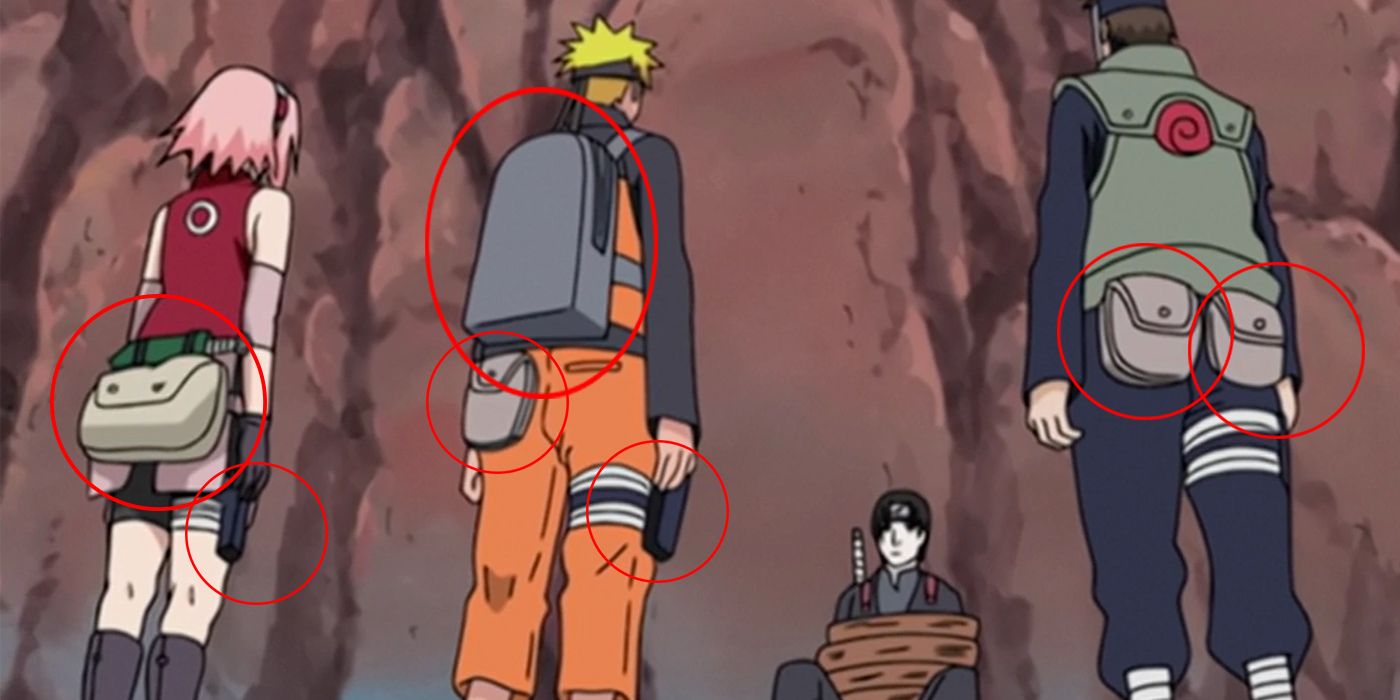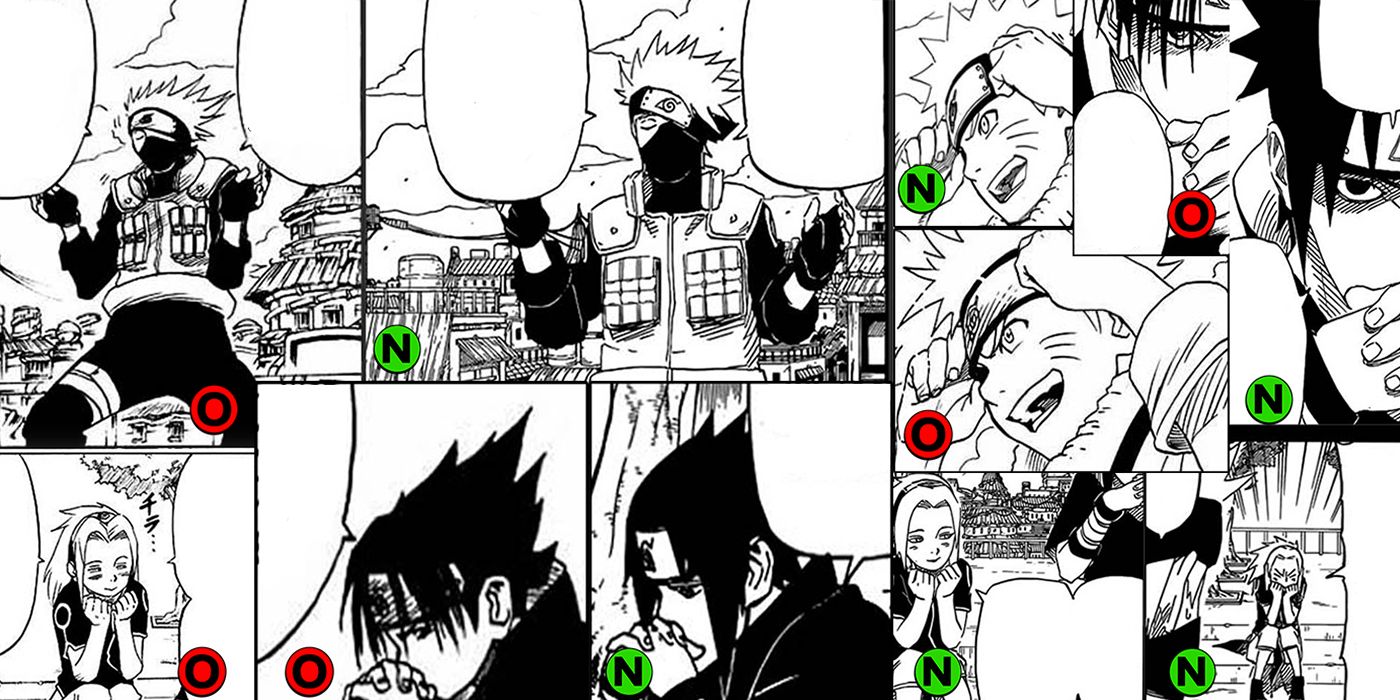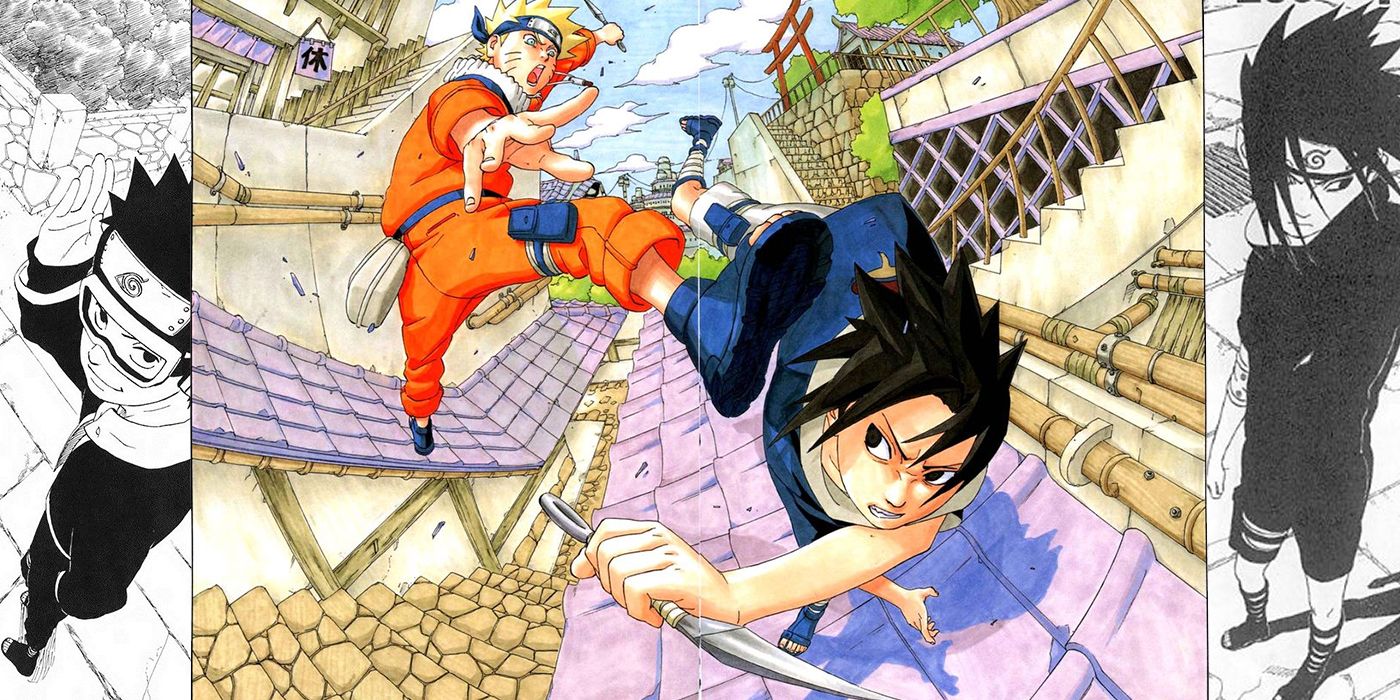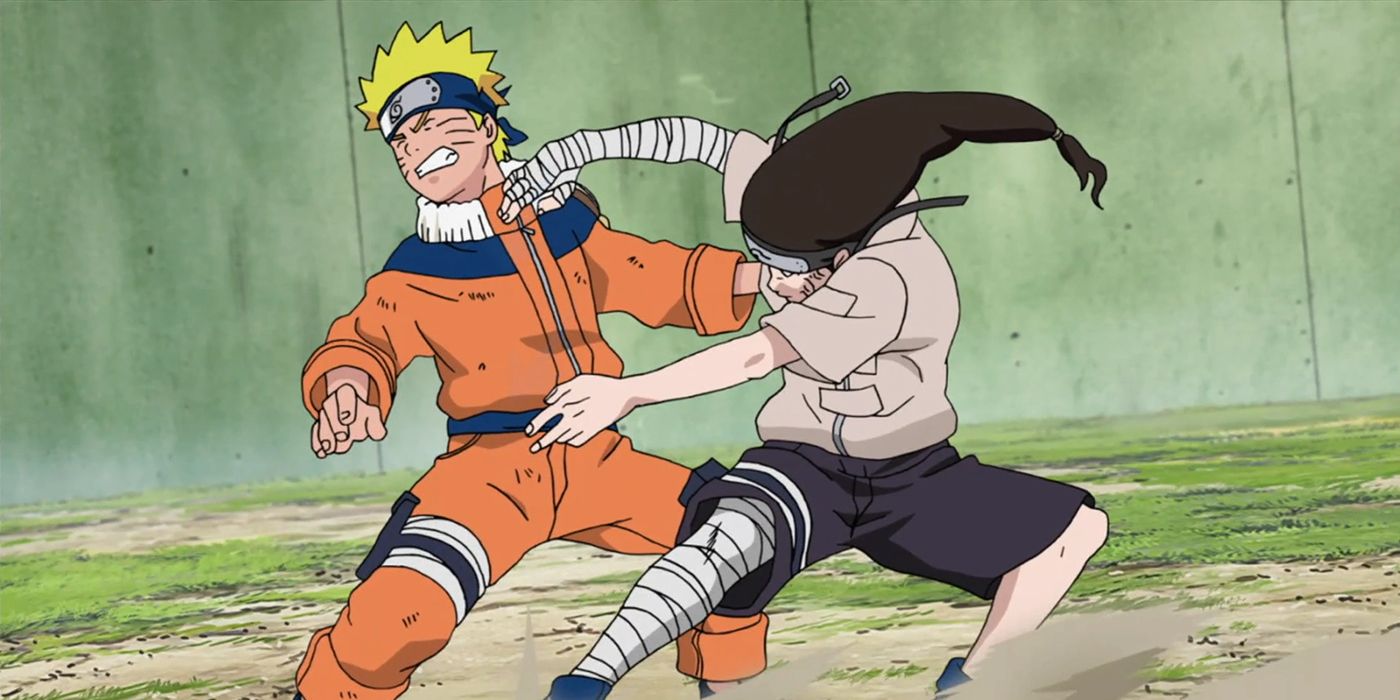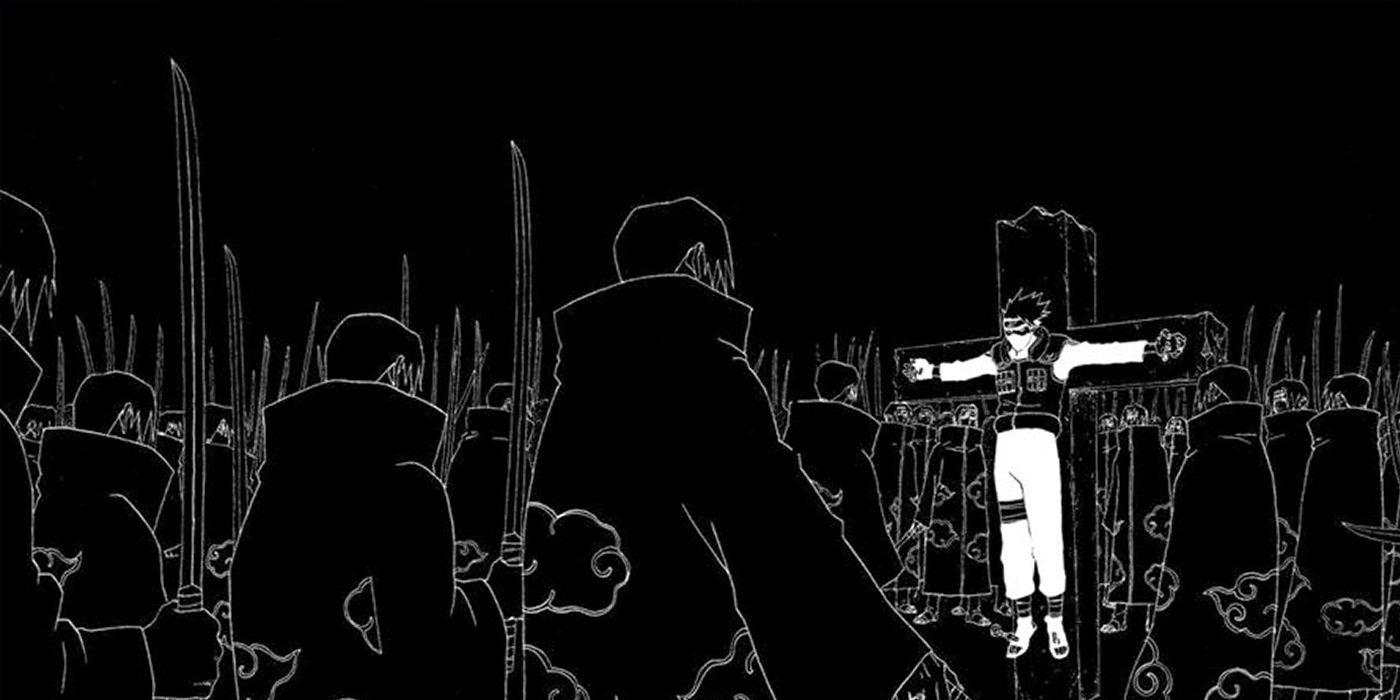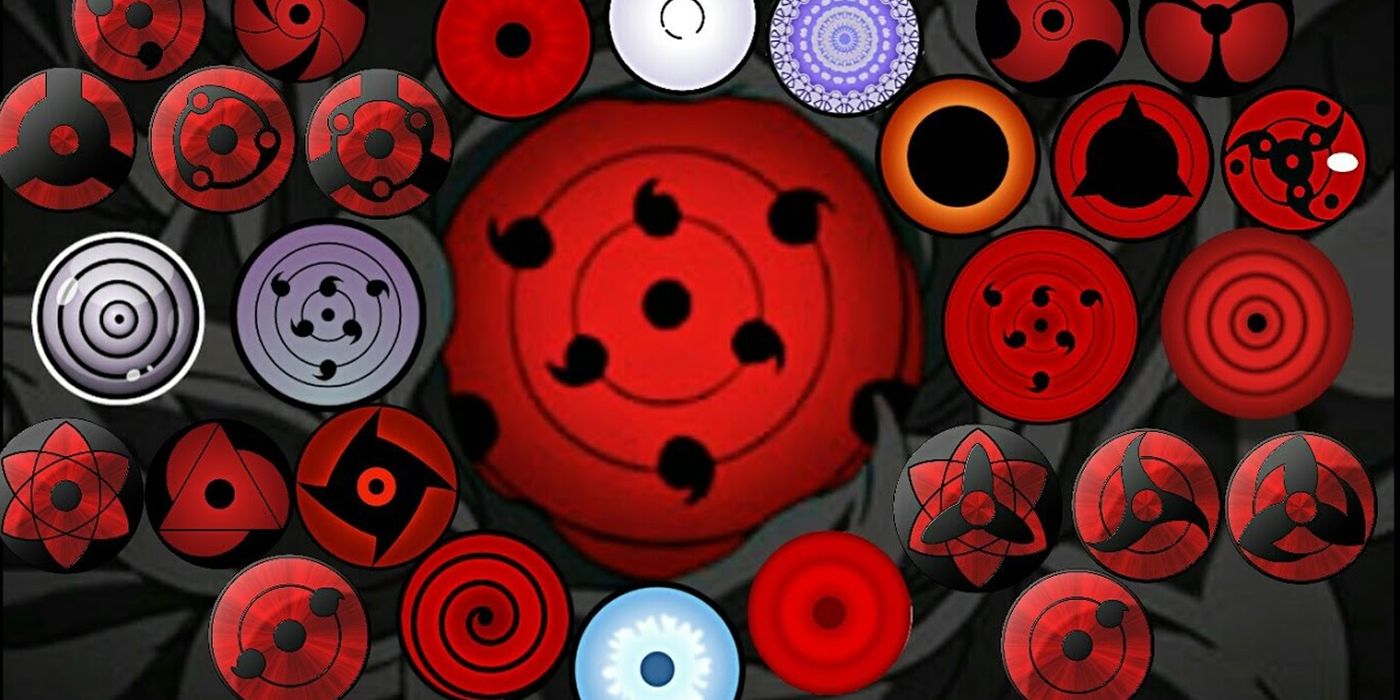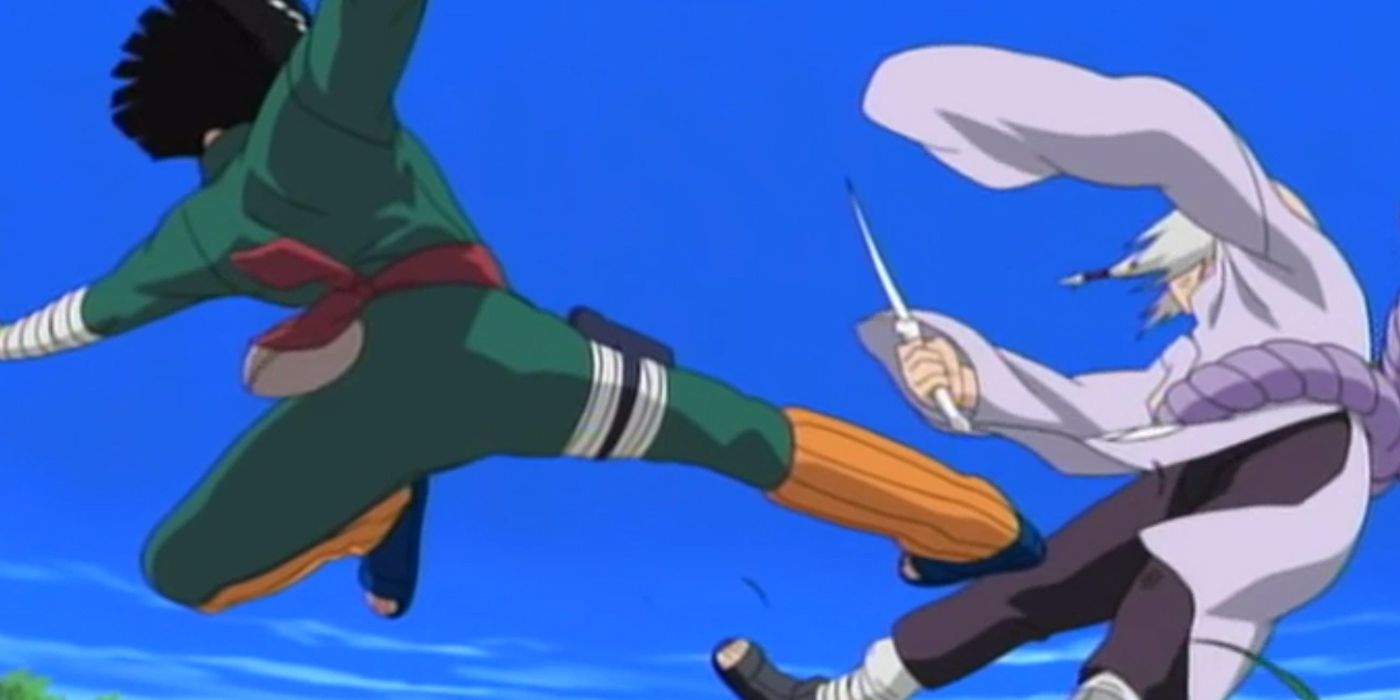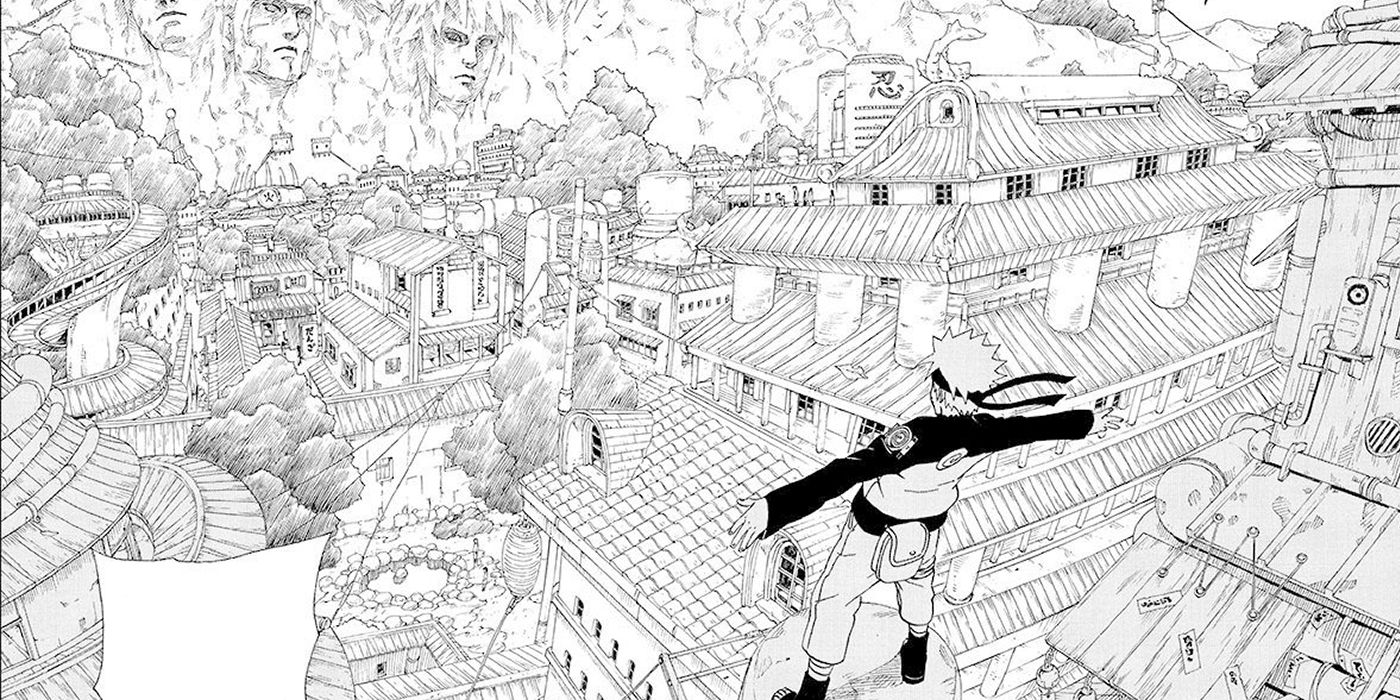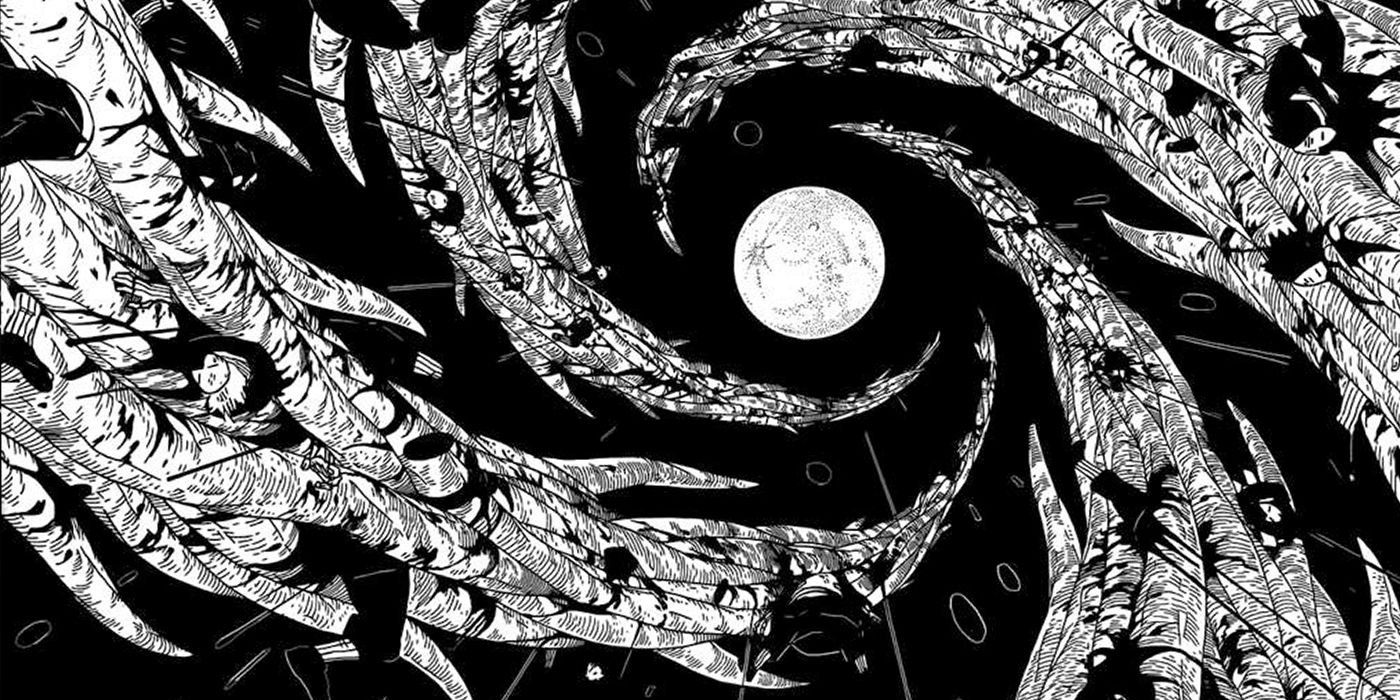The animation industry is fascinating. Not just in how its made, but the styles it varies in. Anime/Manga, in particular, comes in many different shapes in sizes. People unfamiliar with the genre of anime/manga will say that it all looks the same, but each author has a very different art style, at least the successful ones do.
Ask any fan of Shonen manga (when they aren't complaining about what they hate or raving about what they love) and they'll tell you that the art in One Piece, Dr. Stone, and My Hero Academia couldn't be more different. Every mangaka have certain aspects they like to draw more, and specific ones they try to avoid altogether. Some experiment, others don't. Naruto's Masashi Kishimoto, in particular, is who we'll be looking at today, more specifically the artistic aspects of the Naruto franchise you may never have noticed before.
10 Masashi Kishimoto Loves Drawing Bags, Pouches, & Pockets
One thing is for certain, Shinobi seem to carry a lot of different tools into battle. Whether it's shuriken, Kunai, blades, daggers, scrolls, talisman, or even food, they need to keep all their equipment packed tight and close so it won't make noise as they move around. For that reason, their uniforms tend to have a lot of pockets and pouches.
The Naruto shinobi, in particular, have an absurd number of extra pouches, as it seems Kishimoto just likes to draw them. In hindisght, this is funny because as the series went along he simplified his designs to make them more recognizable and easier to draw, but the number of pouches remained.
9 The Manga Designs Eventually Matched The Anime Ones
As we just said, the artstyle of Naruto simplified a bit specifically during the Tsunade discovery Arc. Kishimoto made a conscious effort to merge his designs in the manga with the more simplified Anime ones. Why? Well, because first of all, designs are more memorable and recognizable with they keep a certain level of simplicity.
But also, it allows him to set a sort of guideline for his characters. Before then, the hair in the manga was all over the place, every new chapter protag Naruto would have a different amount of hair spikes or Kakashi's poof would be even taller. Now, there's an exact number and height for each.
8 Masashi Kishimoto Likes To Emulate Aspects From Film
Many art styles revolve around trying to mesh cartoony ideals with realistic details. Because people unconsciously have a harder time relating to characters that don't feel "real" whether through the design or the writing. Kishimoto, in particular, utilized the fisheye lens constantly throughout the shinobi series to make his character feel like they had physical mass.
It's easier to believe a character is "real" if you can see that they're affected by a camera lens the same way we would be. Seriously, re-read some volumes and count just how many times a character, background, or moment is drawn as if it was filmed with a specific camera.
7 Masashi Kishimoto Mastered Anatomy For His Fight Scenes
Fights in anime or manga are a whole different ballpark of difficulty. They require an insane amount of planning, detail, and visual competency in order for it to be clearly readable to the viewer. Some use exaggeration to get their point across, some use tons of accent effects (hit sparks, gore, etc) and some just keep it simple. And, surprisingly for an anime about ninja magic, Masashi keeps it simple.
He may not understand how people run, but the hand-to-hand fights in Naruto are some of the most easily understandable fights in any anime simply because Kishimoto is fantastic at human anatomy, and how they look when using martial arts.
6 Masashi Kishimoto Loves To Experiment With Visual Style
Now in contrast to the realistic anatomy, Naruto as a franchise experiments with its visual storytelling from time to time. The earliest example we can think of is when Itachi pulls Kakashi into his Genjustu and the color palette is basically inverted.
However, there are other examples such as the way Kishimoto visualizes Naruto's inner mind with Kurama, the way Sai tells the story of his tragic past, and the way that the Kurama-possessed Naruto is drawn. It works great as a narrative device because the reader can tell at a glance these things are important because they look so intentionally out of place.
5 Masashi Kishimoto Sure Loves Drawing Eyeballs
Pain is a character clearly recognized by his purple spiral eyes, otherwise known as the Rinnegan. And, that points out another obsession of Kishimoto's, eyes. Now, there are actually a fair bit of manga artists who love to experiment with eye styles, Fire Force's Atsushi Ōkubo (who, funnily enough, is the brother of one of Kishimoto's Assistants) is the most recent example.
However, the different pupil designs for all the types of Sharingan were so insanely cool back in the day. We still remember all the fan-made Sharigan types we'd see just scrolling through forums. But, even if someone tried to argue that the pupil obsession was only limited to Uchiha characters, then what's up with Naruto's frog eyes?
4 The Art Style Changes Because The Person Drawing It Changed
Now, most manga-readers probably already knew this, but for the fans who just enjoyed the series and didn't dig further, yes Kishimoto did pass the torch off to his assistant/protege in the latter parts of Shippuden. It's common practice with the more popular mangaka to have at least one assistant when it comes to the art.
Kishimoto had a fair amount of assistants, which is rare for a mangaka, and this allowed him to maintain a semblance of a social life outside of work. As the series went on, more and more of the series was taken on by Mikio Ikemoto. Now, Ikemoto is the main artist behind Boruto, so it's safe to say his 15-year dedication to Kishimoto paid off.
3 Masashi Kishimoto Nails Mixing Architecture With Fantasy Elements
Naruto's plot might be a bit all over the place a good portion of the time, the characters might have nonsensical motivations, and the villains might be cliche, but boy howdy are those backgrounds amazing. Sure, a lot of the time Kishimoto relies on just having a few trees or a single building serving as the background, but when he draws a city, he draws it well.
His insanely complex skylines are some of the best panels in the series. Our favorite examples are when Pain is sitting at the top of the Hidden Rain village with the city behind him when both Naruto and Sasuke return to Konoha after the time skip, and the first time Boruto looks out at the new and improved Hidden Leaf Village.
2 Masashi Kishimoto Is A Master Of Drawing Open-Faced Sandals
Another thing that fans and mangaka tend to notice as a series goes on is how many times they draw specific mundane objects. For example, One Piece's Oda has become amazing at designing Jolly Rogers thanks to all the pirate crews -see, they're similar, we don't have to pick sides!
Meanwhile, Naruto's creator has become amazing at designing weird open-faced sandals thanks to it being an established norm for all the shinobi in the series. Sure, there are the standard ones most Konoha citizens wear, but he's also designed a wide variation of sandals throughout the 15-year run. An odd thing to pick up on, sure, but still absolutely true.
1 Masashi Kishimoto Seems To Be Obsessed With Swirling Patterns
And lastly, we can also tell that Kishimoto has a fondness for spirals much in the same way that Studio Trigger (the creators of Gurren Lagann) must as well. Why do we think so?
Well, just look at the provided image and the following: Chakra flow is determined by how hairline spirals, Naruto's trademark move is the spiral-based Rasengan, Kakashi and Obito's most seen Sharingan power revolves around a spiral, and much more.
And hey, we get it, spirals are a great visual. They're repetition incarnate, which is one of the most common traits of any Shonen hero. We're just merely pointing out how rampant they are throughout the franchise!


